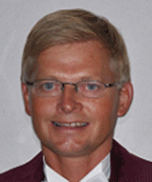State of the art technology for subsea tie-in and repair systems in the North Sea*
Per A. NesjeNemo Engineering AS P.O. Box 150, N-1325 Lysaker, Norway. Email: per@nemo-engineering.no
The APPEA Journal 50(2) 737-737 https://doi.org/10.1071/AJ09101
Published: 2010
Abstract
The new design of subsea structures such as riser bases (RB), pipeline end terminations (PLET) and pipeline end manifolds (PLEM) has resulted in lighter and more installation-friendly solutions.
PLETs and PLEMs can be installed together with the pipeline, avoiding separate installation campaigns. The RB is designed to slide on the seabed, hence it can be connected directly to the pipeline, avoiding the need for expansion spools.
If dropped object and/or trawl protection is required, a range of standardised GRP protection covers is available for the protection of structures, inline/hot-tap tees and spools.
A new remote controlled tie-in system—THOR—has been developed for general use. The concept offers significant cost savings when measured against the existing conventional tie-in tool-based systems. The system will be available for all pipeline sizes and will be independent of connector manufacturer. A vertical system for hot-tapping and tie-in onto a hot-tap tee has been developed and installed on the Ormen Lange field. The system includes a contingency isolation plug for recovery of the isolation valve module. Active pipeline supports (APSs) have been introduced to the market and are now installed on several projects. This type of structure will enable the adjustment of pipelines during and after installation, and will therefore ensure more flexibility during the design phase.
The pipeline repair system developed for the North Sea has been used for 20 years and is definitively field proven through a large number of repair operations and planned work. Many repair components and their associated installation systems have been made and used over these years. Based on this knowledge we can now better recommend, to a new repair market such as Australia, which type of repair items to purchase for the local repair system.
This evaluation will also identify the items or components that should be partly prepared, either on a design level only, or up until storage of forged material or completion of particular long lead items.
Keywords: pipeline, riser base, pipeline end manifold, tie-in, active pipeline support, GRP protection cover, diverless hot-tap, pipeline repair

Per Arild Nesje presently works as Director for the Business Area for Special Solutions at Nemo Engineering AS in Oslo, Norway. He was one of the founders of this company in 1989, and is today one of the board members. He holds a BSc degree in mechanical engineering from the University of Newcastle Upon Tyne, England (1982). His entire career has been devoted to the development and delivery of subsea equipment and tooling for temporary and permanent use. Today his responsibilities within Nemo cover: repair tools and systems; modifications to subsea pipelines and structures; intervention and handling systems; special challenges in arctic areas; and, offshore wind, wave and tidal energy. |


